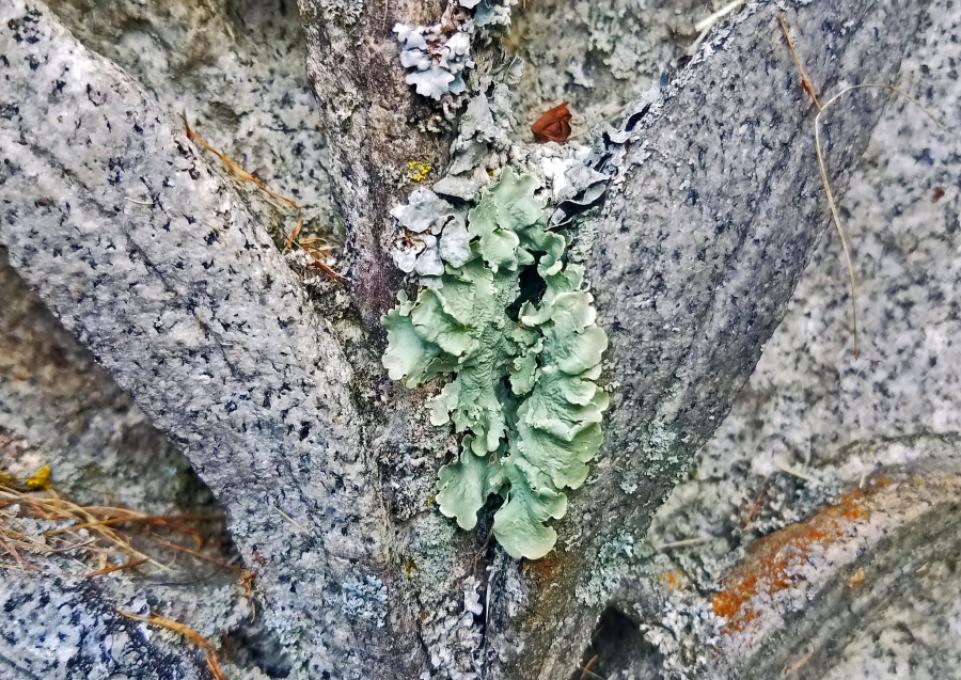
The iron smelters and coal-fired power plants may be gone, but the imprint of a rust-belt region’s industrial legacy remains in its lichen communities. Lichens are the proverbial “canaries in the coal mine” when it comes to looking at the damaging effects of pollution in a given area, said Robert J. Warren, associate professor of biology.
Lichens are plantlike organisms, actually two organisms—an alga and a fungus—that function together as a single unit. They grow on solid natural surfaces like rocks or trees and vary in their sensitivities to drought and pollution.
In a recent study titled “Long-Term Lichen Trends in a Rust Belt Region,” Warren and his team of researchers found that pollution- and drought-sensitive lichens have disappeared from postindustrial areas in Western New York since the 1800s, reflecting years of sulfur dioxide and nitrous oxide pollutions. The study appears in the current issue of the Journal of Urban Ecology.
The study was based on a lichen database compiled by Jim Battaglia, a visiting research associate at the Buffalo State Eckert Herbarium. Buffalo State graduate students Shannon Casterline, Madeson Goodman, Megan Kocher, and Rachel Zaluski assisted with the research.
Going in to the study, Warren and his team expected to find heat- and drought-resistant species of lichens, those that had adapted to the urban pollution and “heat islands” created by parking lots, cars, and buildings. And while the research did support their hypothesis, the study also found a surprising level of biodiversity in the region.
“The really cool thing,” Warren said, “and this was a very unexpected piece, is that we found so many unique species in the urban area. Even though [the city] is lacking some of the more sensitive species, it’s also hosting lichens that we don’t see anywhere else in the region.”
Whereas the imprint of the city’s industrial past is still reflected by the lichen population, the study found that the urban lichen populations contribute to the overall diversity of lichens found in the region.
“It’s just another good reason to consider urban areas part of the ecological landscape,” he said. “They’re not going anywhere, but we certainly could improve them for living things.”
Buffalo is moving in the right direction in terms of green space and reducing pollution, Warren said, and there are lessons for other cities.
“I think the overview is that the detrimental effects of humans are very long-lasting. Yet, human impacts can be mitigated.”
That means urban areas can be viable habitats, as the lichens in Western New York show.
“Just not as they’ve been done traditionally,” he said. “Green spaces and corridors absolutely lower pollution and heat retention. I think we can say that Buffalo is on the cusp of greatness. There’s a movement to bring more pollinators in. There’s a movement for more greening. Instead of finding the nasty legacy of missing species and communities, maybe scientists in the next century can find the positive legacy of better habitat management and restoration.”
